|
scenery details

laid table on the terrace
The fine detailing of scenery makes or breaks
the overall effect. I find it very useful to take many photos of subjects
that I am trying to model. It is important to edit for the period being
modelled. Is the ladies handbag right for the period, for instance?
Many fine details are now available
commercially, and in general we never make something if it can be bought.
Many more wonderful details can be found on US websites in H0. So many things are often omitted on model railways, such as compost heaps,
moss and bird droppings on roofs, animal runs under fencing, mole hills...the list is
endless. When developing a section of our railway, we constantly take
pictures and ask ourselves...'what is missing?'.

Gardening materials at the mews.
Colour variations on roads, soil and paving
can be considerable. The gravel drive in front of the hotel was made by
using three layers of slightly different colour gravel. While still
slightly soft, it was then churned up with a dental pick and the loose
material then vacuumed off. This gave the effect of car tyres, and a few
potholes emerged. The same treatment was given to the lane going to the
station.
Some modellers such as Chris Nervard, will
add lines to their telephone poles. Magicians thread is employed but do
not forget, one touch or is you have a helpful cat, and the lot will be
down.

Chris's modelling is fantastic

the drive at the hotel

station entrance
In front of the loco shed, we added small
detail of tools and maintenance material that always seems to get left
around.

In front of the sheds. Cleaning bucket and rags alongside a leaking
hosepipe. In the background, out of focus, is a firewood pile under a
tarp. An axe is driven into the tree stump alongside.

outside the shed - the 'I shunt with care' sign was typical of the L&B
For signage around the model, we have just
made the graphics using Photoshop and added them to a Word document at the
correct size. They are printed on photo glossy on high definition then cut
out and most of the paper peeled away to thin the graphic. The cars all
have number plates which were actually attached to a car of that make and
colour in 1935, and the AA and RAC signs on the hotel are correct for the
period. Road signage was also researched.
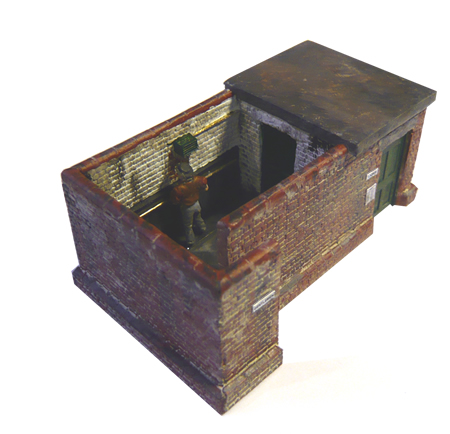
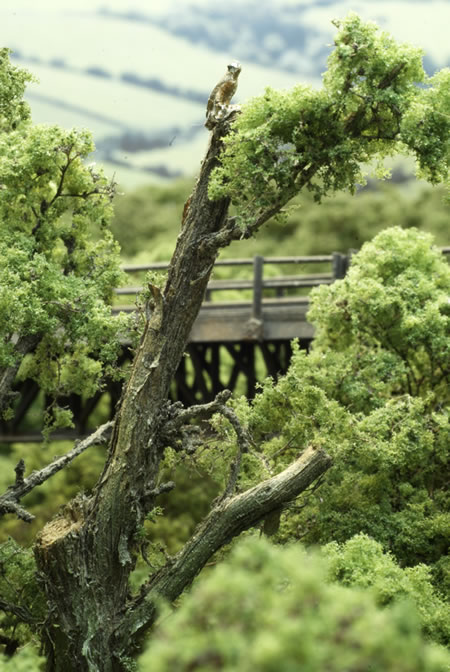
a raptor perches on an old tree
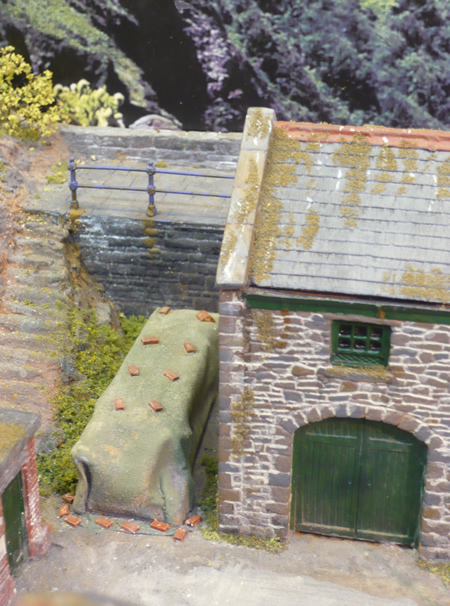
a tarp held down with bricks at the harbour
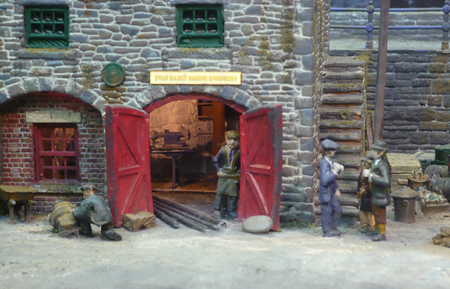
d'Arcy marine engineers. The interior is
lit and fully detailed
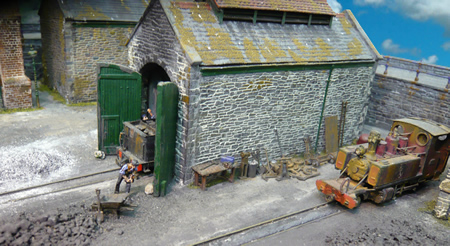
the derelict Alco gradually rusts next to
the harbour engine shed - click on image to enlarge
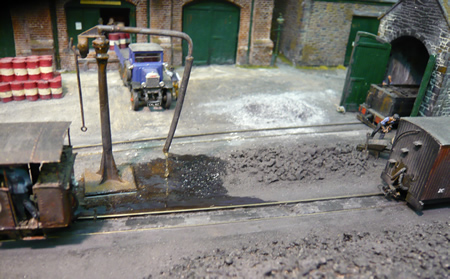
the leaking water crane at the harbour
I always photograph the details of the layout
with a high resolution digital camera. I then project on my computer and
study my work. It is only by doing this that I can pick up faults which
somehow pass muster when looking at the layout. In the case above, it is
the canvass hose of the water crane. It should of course hang down
vertically. A new one was fabricated from the shaft of a Q Tip. The lower
half was flatted with a soldering iron. I also moulded some small waves
which would have been formed with water pouring from the hose.
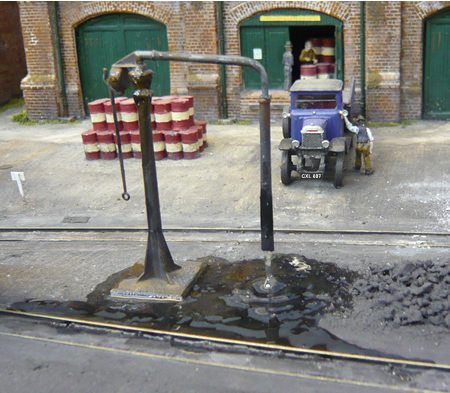
the remade hose for the water crane

a beautiful model spoiled by the gap!
One of the ongoing howlers I often see are
gaps between buildings and the ground. Otherwise wonderful models are
spoiled in this way. I know, on occasion, the buildings are designed to be
removable, but even then, one can hide the gap with the inevitable weeds
that grow up there.

|